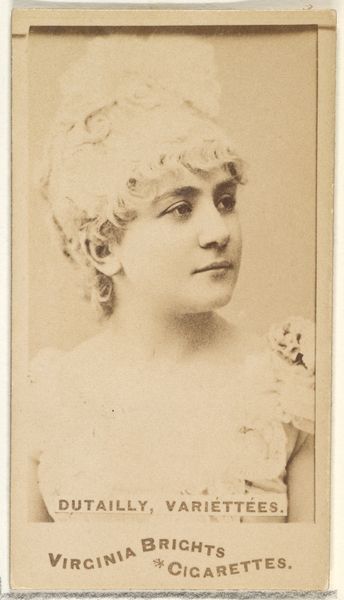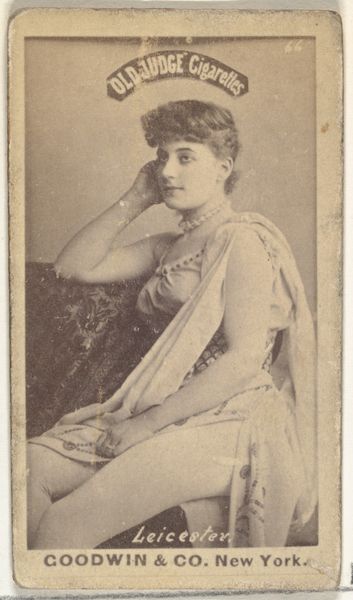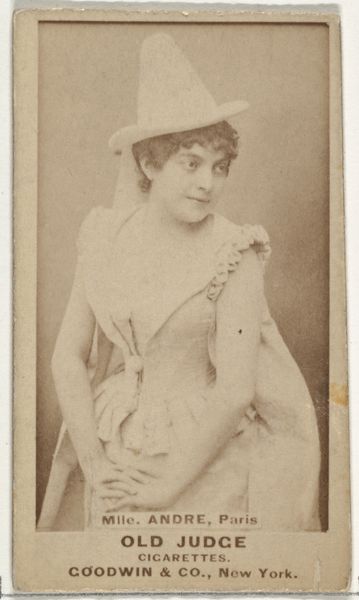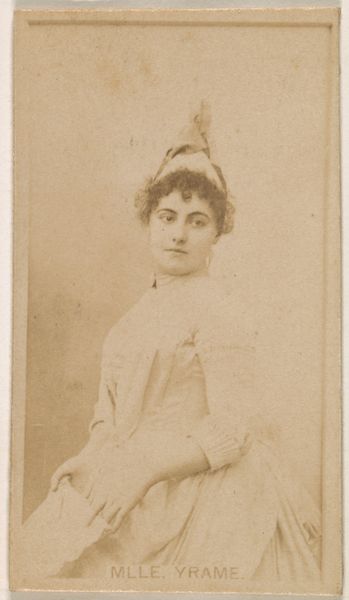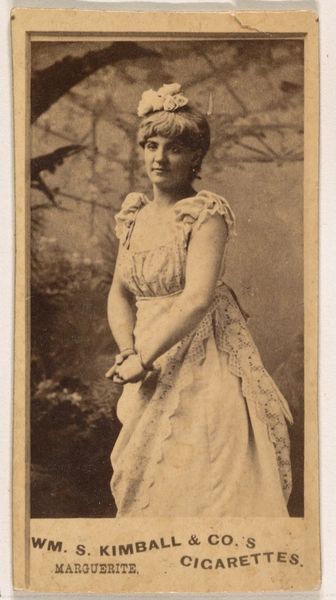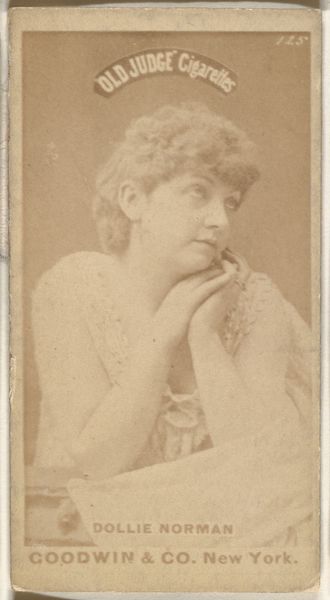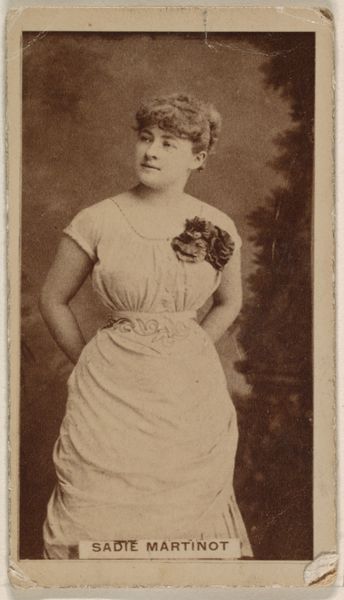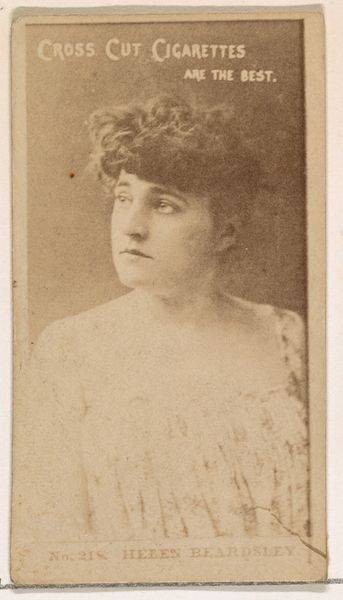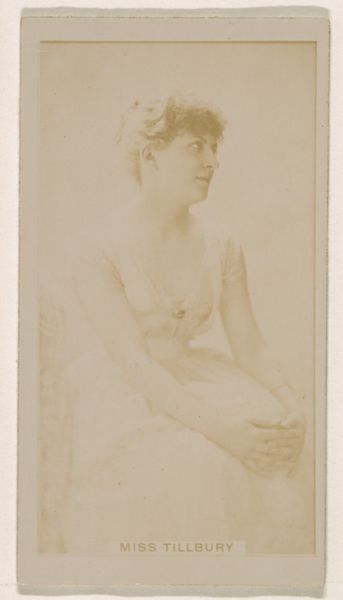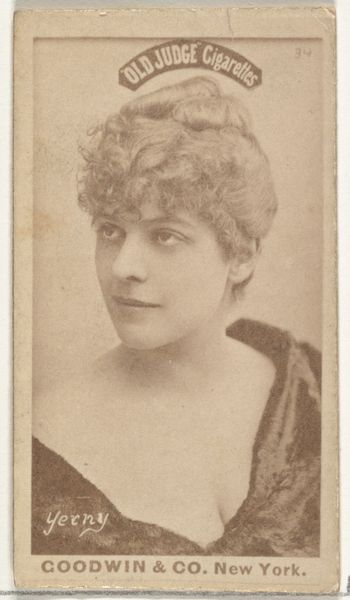
Mrs. Hamer, from the Actors and Actresses series (N45, Type 8) for Virginia Brights Cigarettes 1885 - 1891
0:00
0:00
print, photography
#
portrait
# print
#
photography
#
19th century
Dimensions: Sheet: 2 5/8 x 1 1/2 in. (6.6 x 3.8 cm)
Copyright: Public Domain
Editor: This is "Mrs. Hamer," a photographic print from the "Actors and Actresses" series made between 1885 and 1891 by Allen & Ginter. The sepia tones give it a lovely antique feel. What catches your eye about this portrait? Curator: It's interesting to consider this image not just as a portrait but as a commodity, part of a series included in cigarette packs. The paper, the photographic chemicals, the printing process itself, all facilitated by industrialization, become central to understanding its purpose. It’s advertising masquerading as art, meant for mass consumption. Editor: So, you're saying the focus shouldn't be on Mrs. Hamer, the individual, but more on the context of how the image was produced and consumed? Curator: Precisely. Consider the labor involved: from the photographers to the factory workers printing thousands of these cards. How does the mass production of images change their perceived value, their 'aura,' to borrow Benjamin's term? And think about Virginia Brights cigarettes - who was consuming them? What social class? What does it mean that images of actors and actresses were used to sell tobacco products to this particular demographic? Editor: That's a perspective shift I hadn't considered. It frames it less as art for art's sake and more as a commercial product with complex layers of production and target markets. So the materials tell a different story than just the image itself. Curator: Exactly. We move beyond a simple reading of Mrs. Hamer's portrait and start questioning the socio-economic forces at play during its creation and distribution. Editor: This was really insightful! Thanks. It definitely makes you consider the unseen forces at work in creating an artwork, like the labour, materials, and intent behind commercial art.
Comments
No comments
Be the first to comment and join the conversation on the ultimate creative platform.
